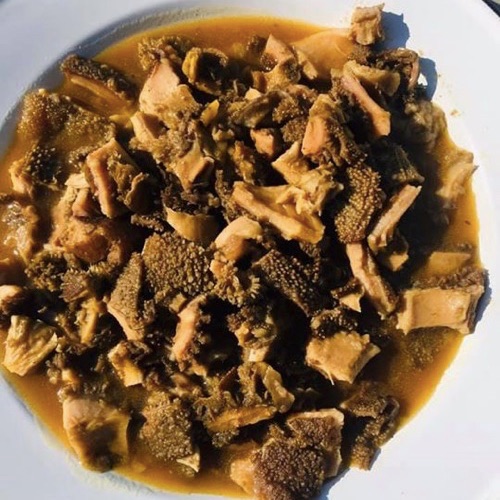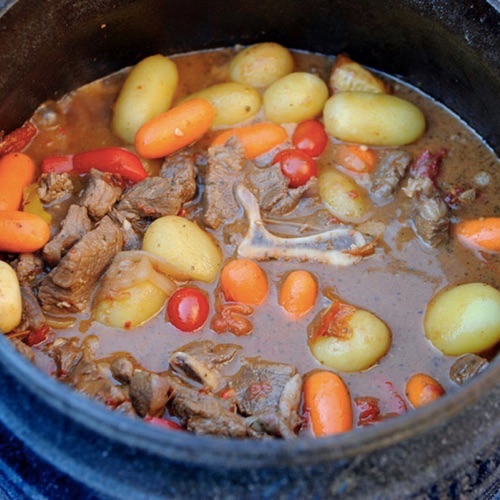Samp is a nutritious and versatile grain that has become a staple food in many cultures around the world. It is made from dried corn kernels that have been crushed and separated to remove the outer shell and germ.
This leaves behind the starchy endosperm, which is then ground into a coarse meal. The resulting product is a highly nutritious and versatile ingredient that can be used in a wide range of dishes, making it an excellent addition to any diet.
Although samp may not be as well-known as other grains like rice, wheat, or barley, its unique flavor and texture have endeared it to those who have had the chance to taste it.
In addition, its impressive nutritional profile and numerous health benefits make it an attractive option for those looking to improve their diets and overall well-being.
This comprehensive guide will provide an in-depth look at samp, from its origins and history to its many culinary uses, including tips on how to select, store, and grow it.
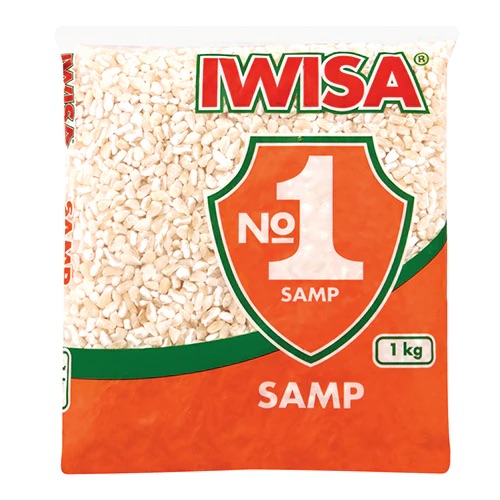
Origin and History of Samp
Samp has a long and storied history that dates back thousands of years. It is believed to have originated in the Americas, where it was a staple food for many indigenous peoples.
The word “samp” itself is derived from the Narragansett word “nasàump,” which means “a dish of cornmeal.” European settlers who arrived in the New World were introduced to samp by the native people, and it quickly became a popular food in colonial America.
Over time, the cultivation and consumption of samp spread to other parts of the world, particularly in Africa. Today, it is a staple food in many African countries, particularly in South Africa, where it is known as “umngqusho” or “isitambu.” It is often prepared with beans and served as a side dish to meat or vegetable stews, and it is an essential component of traditional African cuisine.
Nutritional Benefits of Samp
Samp is not only a delicious and versatile ingredient, but it is also packed with numerous health benefits.
It is a rich source of complex carbohydrates, which provide the body with sustained energy and help to keep blood sugar levels stable. In addition, samp is low in fat and cholesterol, making it a heart-healthy food choice.
It is also high in dietary fiber, which is essential for maintaining a healthy digestive system and preventing constipation. The fiber in samp can also help to lower bad cholesterol levels and reduce the risk of heart disease.
Moreover, it’s a good source of essential vitamins and minerals, including B vitamins, iron, magnesium, and zinc. These nutrients play a crucial role in maintaining overall health and well-being.
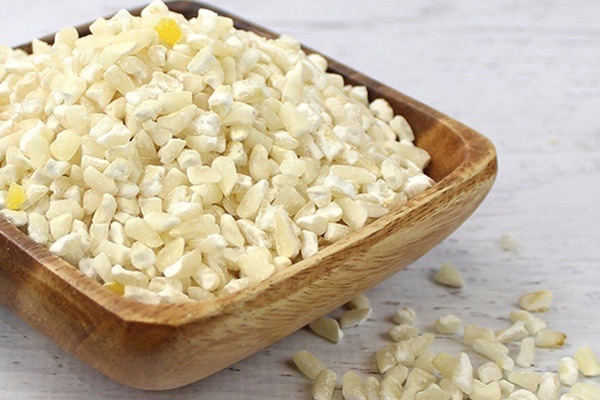
How to Cook and Prepare Samp
Preparing samp is a simple process that requires minimal ingredients and equipment. First, it is essential to rinse it thoroughly under cold running water to remove any debris or impurities.
Next, it should be soaked in water for a few hours or overnight to soften the kernels and shorten the cooking time. Once it has been soaked, it can be drained and placed in a large pot with fresh water.
To cook samp, bring the water to a boil and then reduce the heat to a simmer. Cook it for 1-2 hours or until it is soft and tender, stirring occasionally to prevent sticking. If the water level gets too low, add more water as needed to keep the it submerged. Once the it is cooked, it can be drained, seasoned, and served as desired.
Creamed Samp Recipe
One popular way to enjoy samp is in a creamy, comforting dish known as creamed samp. To make creamed samp, you will need the following ingredients:
- 2 cups samp, rinsed and soaked overnight
- 6 cups water
- 1 teaspoon salt
- 2 cups milk
- 3 tablespoons butter
- 1 cup heavy cream
- Freshly ground black pepper, to taste
To prepare creamed samp, first cook the soaked it in water with salt until tender, as described in the previous section. Next, drain the water and return the cooked samp to the pot.
Add the milk, butter, and heavy cream, and cook over low heat for 15-20 minutes, stirring frequently to prevent sticking. Season with black pepper to taste and serve hot.

Variations and Recipes
Samp is a versatile ingredient that can be used in a wide range of dishes. Here are a few ideas for incorporating it into your meals:
- Combine cooked samp and beans or lentils to make a hearty, protein-packed meal.
- Use samp in place of rice or other grains in pilafs, stir-fries, or salads.
- Create a savory samp porridge by cooking it with stock, vegetables, and herbs.
- Add cooked samp to soups or stews for added texture and nutrition.
Tips for Selecting and Storing Samp
When selecting samp, look for kernels that are clean, unbroken, and free of any debris or insects. It can be found in the bulk section of many grocery stores, as well as in pre-packaged bags or containers. Store it in an airtight container in a cool, dry place, away from direct sunlight. Properly stored samp can last for several months.
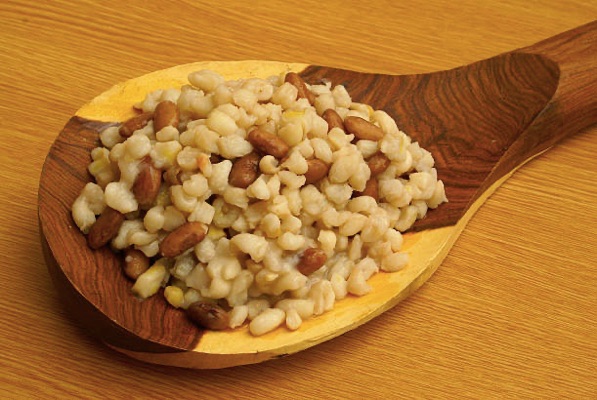
How to Grow and Harvest Samp
Growing your own samp can be a rewarding and environmentally friendly way to enjoy this nutritious staple. To grow it, start by planting corn seeds in well-draining soil in a sunny location.
Water the plants regularly and provide them with ample nutrients to ensure healthy growth. Once the corn is fully developed and the kernels have dried on the stalk, harvest the ears and remove the kernels by hand or with a corn sheller.
To process the harvested corn into samp, the kernels must be cracked and ground to remove the outer shell and germ. This can be done using a mortar and pestle, a grain mill, or specialised samp-processing equipment. Once the it has been processed, store it as described in the previous section.
In Cultural and Traditional Cuisines
Samp has played a significant role in the culinary traditions of various cultures throughout history. In the Americas, indigenous peoples relied on it as a staple food, and it was often used in religious ceremonies and rituals.
Across Africa, it has become an essential ingredient in traditional dishes and is often served at celebrations and gatherings in the form of samp and beans.
In South Africa, samp and beans, known as “umngqusho” or “isitambu,” is a popular dish often served with meats or stews.
In Zimbabwe, samp is used to make a traditional dish called “sadza,” which is a thick porridge eaten with vegetables, meat, or fish. Samp’s versatility and nutritional value have made it an integral part of many cultural and traditional cuisines around the world.
Comparing Samp with other Nutritious Grains
While samp may not be as well-known as other grains, it holds its own in terms of nutrition and versatility.
Compared to grains like rice, wheat, and barley, samp is higher in dietary fibre and has a lower glycemic index, making it a healthier option for those looking to manage their blood sugar levels. Additionally, samp is gluten-free, which is a significant advantage for individuals with gluten sensitivities or celiac disease.
In Summary
In conclusion, samp is a delicious and nutritious staple that deserves a place in any health-conscious diet. Its versatility, ease of preparation, and impressive nutritional profile make it an excellent choice for those looking to improve their overall well-being.
By learning how to cook, store, and grow your own samp, you can enjoy the many benefits of this ancient grain while also preserving its rich cultural heritage. So why not give it a try and discover the myriad ways it can enhance your meals and your health?

